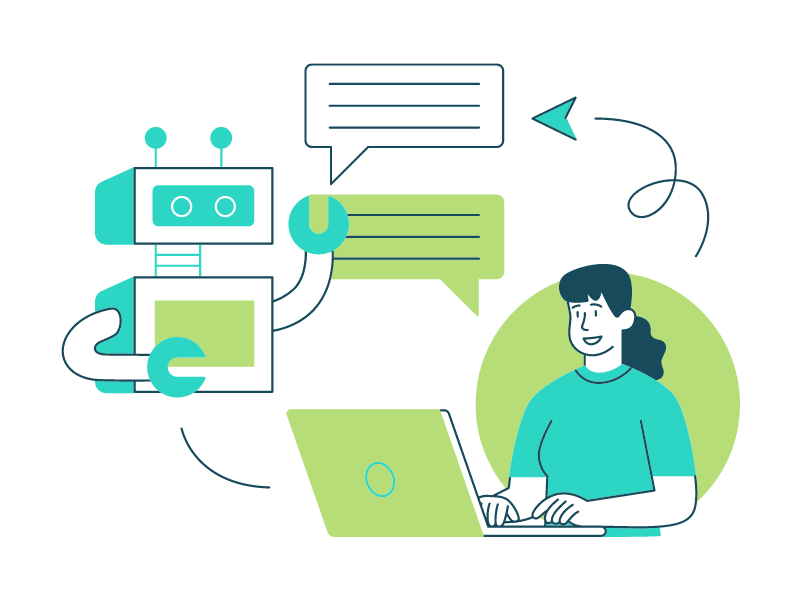AI for nonprofits: the do’s and dont’s
Artificial intelligence tools aren’t new, but they’re getting unprecedented attention due to the introduction of chatbots like ChatGPT and other popular software, like Jasper AI. It’s clear AI is here to stay and, in fact, can be an incredibly effective tool to help nonprofits work more efficiently, reach larger populations, and ultimately, drive greater impact.
Because nonprofit work is so personal and nuanced, it’s critical to be hyper-aware of the ethical and moral concerns around these new tools.
These do’s and don’ts—based on our own experience at MFF and advice from experts in the AI and social-good fields—will help you navigate your own AI journey.
DO use AI to analyze large datasets and help make data-driven decisions.
Nonprofits can leverage AI to analyze large datasets and gain insights that inform strategic decision-making. AI tools can identify patterns and predict outcomes to help nonprofits be more effective in program delivery, evaluating outcomes, and ultimately in achieving their overall missions.
DO use AI to analyze donor data.
AI tools can find patterns and preferences to better personalize fundraising appeals. AI-powered chatbots can engage with potential donors, answer questions and provide personalized giving suggestions. This can help nonprofits scale their outreach efforts.
When designing prompts to use with ChatGPT or other generative AI tools, be specific and tailor your examples to the organization’s unique mission and needs.
Please analyze our donor database and identify key factors influencing donor contributions.
Given our organization’s mission and target beneficiaries, how can we leverage our resources and collaborate with partners to maximize our impact?
Can you help us optimize our fundraising messaging for a specific campaign or target audience?
DO leverage AI to broaden support and make services more accessible.
AI can provide scalable support to many audiences simultaneously and offer accessible services and information to beneficiaries and community members. A chatbot on a nonprofit website can quickly answer questions and direct users to the support they’re looking for. AI-powered translation services can help make services available in a wider variety of languages. Tools like ChatGPT can help identify barriers and opportunities for your organization.
Get started with these example prompts to use with ChatGPT or other generative AI tools. Remember to ask follow-up questions as needed.
What strategies can we employ to remove barriers and improve access to our services?
How can we leverage technology to better collaborate with partners and use shared resources to scale our impact?
DO use AI to allocate resources more efficiently.
By analyzing historical data and related factors, AI can provide recommendations on how to allocate limited resources such as funding, time and personnel. This ensures that resources are used efficiently and directed toward areas with the greatest impact.
Try out these prompts with ChatGPT or other generative AI tools.
What key factors should we consider when prioritizing resource allocation across our programs?
Can you help us develop a data-driven framework for resource allocation that considers both short-term needs and long-term sustainability?
DO use AI to measure and evaluate programs.
By analyzing program data and outcomes, AI can help identify areas of success and areas that require improvement. This helps organizations refine their programs, measure impact and adapt strategies to achieve better results.
Try these prompts to evaluate programs.
Based on our program data, what are the key metrics and indicators we should focus on to measure impact?
Can you analyze feedback from stakeholders and identify areas for improvement in our impact reporting?
DON’T use AI in situations where human empathy is mission-critical.
Before consulting AI on a challenge, think, “Would I want a machine to make decisions or communicate about this issue if I were on the other end of the equation?” Nonprofits often help people through traumatic experiences and serve as a lifeline when no others exist. When providing life-changing assistance, communication should come from a real person, not an AI chatbot. When determining who will receive limited resources, a human should be the ultimate decision-maker and carefully review any AI-driven analysis to ensure empathy and equity.
DON’T share sensitive or personally identifiable information with AI.
AI is programmed to improve over time based on prior conversations. When sharing data or information with AI, be sure to remove personal details and identifiable characteristics.
DON’T forget that AI can be just as biased as humans—if not more so.
Nonprofits should advocate for AI models to be trained on diverse and representative datasets to prevent biases and discrimination. Nonprofits should also invest in high-quality AI systems and professional development for staff to best understand how AI tools work and how to mitigate potential ethical concerns. Even with safeguards in place, though, biases cannot be avoided entirely. Nonprofits need to carefully monitor AI-developed work, and examine their own human biases, to avoid pitfalls.
When asked how nonprofits can use AI to improve efficiency, ChatGPT offered its own warning: “It’s important to approach AI implementation with careful planning, ethical guidelines and a commitment to ongoing evaluation and improvement.”



